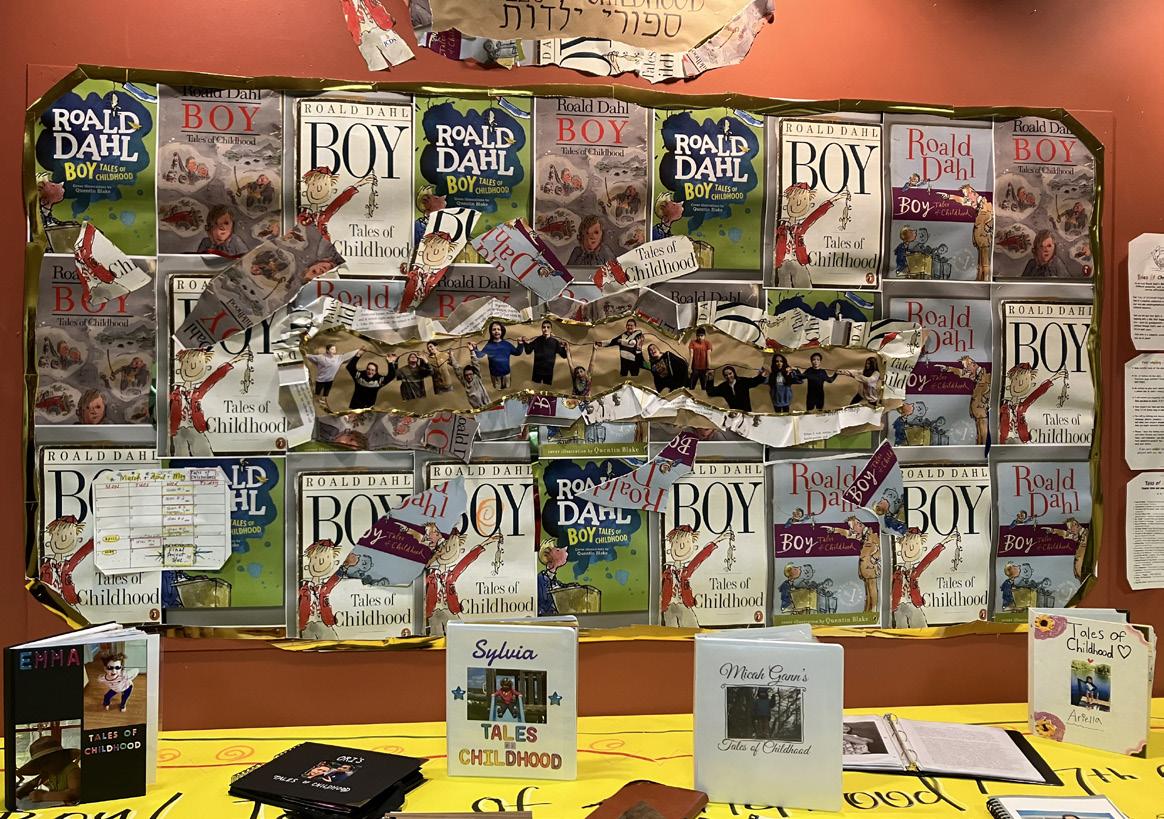
2 minute read
Righting the Write: The Power of the Written Word
By the time our students reach eighth grade, the concept of backward design* becomes even more critical to their education. Determining what they will need to be academically well-prepared for high school is integral to building our eighth grade curriculum. This is particularly true in the writing arena, for students will be writing literary essays, composing research papers, generating reports, and other written communications for years to come, and the manner and style in which they write is as important as the content itself.
From Gan Nitzan through 8th grade, students are taught to take pride in their writing; to consider words used, feelings expressed, and to know that the first draft is never the best one. Good writing takes time and requires scrutiny, editing, and continued revision. Our Nitzanim are taught to: “think, draw, label, write, edit, and publish.” Simply remove draw and label from the mix, and those are the very same instructions we give our Middle Schoolers!
Advertisement
As eighth grade English teacher Joanne Baker has voiced over the years, “The single most important thing I can teach eighth graders is to be articulate, crisp, and mindful writers. To recognize that evidence is vital in exposition, that thoughtful, decisive word choice determines a reader’s impression and understanding of what is on the page; that excellent writing is a form of communication, and communication drives a functioning society. Writing well is hugely important, and I want our kids to leave JCDS, masterful wordsmiths.”
Recently, while eighth graders studied the rise and fall of Adolf Hitler in history class, they simultaneously read Orwell’s Animal Farm in English class. The rise of Napoleon the Pig on the farm parallels the rise of Adolf Hitler in Nazi Germany, thus the book was used as a vehicle for the writing of a comparative essay in which eighth graders compared the two dictators’ rise over their prospective lands. In the process, parent Dave Cutler asked Joanne her thoughts on the prevalence of Artificial Intelligence (AI) – and specifically the implications of ChatGPT being readily available to students. He then, using the very same prompt given to the eighth graders for their work, generated an essay using ChatGPT!
During peer reviews of each others’ papers, students also read the AI essay, and passionately discussed its pros and cons. It was eye-opening and deeply heartening to hear their comments which so clearly illustrated their full understanding that: “While the AI piece is well written, it sort of lacks voice and doesn’t have detail,” and “. . . it doesn’t give any examples of proof like we had to do. There is definitely a lot of stuff missing.” The class discussion continued with the import and vitality of human voice that comprises life experiences; something AI, despite having vast amounts of information, acutely lacks.
While Artificial Intelligence is here to stay, our students graduate with an understanding that writing is critical to self-expression, self-reflection, and imparting their unique voices, experiences, and thoughts to others. There is humanity in the written word that was, is, and always will be, vital to communication and one’s transmission of ideas.
*Backward design begins with what students are expected to learn and be able to do—and then proceeds “backward” to create lessons that achieve these desired goals.







